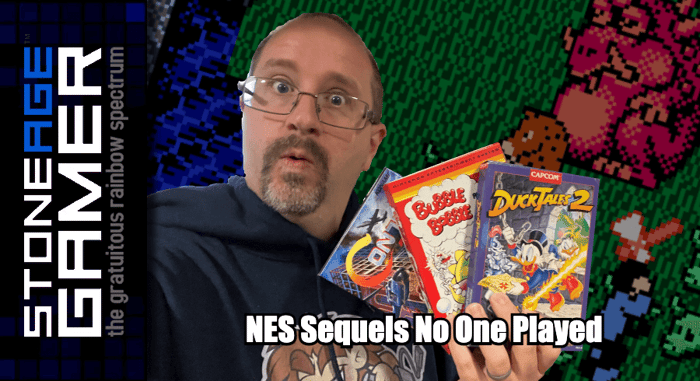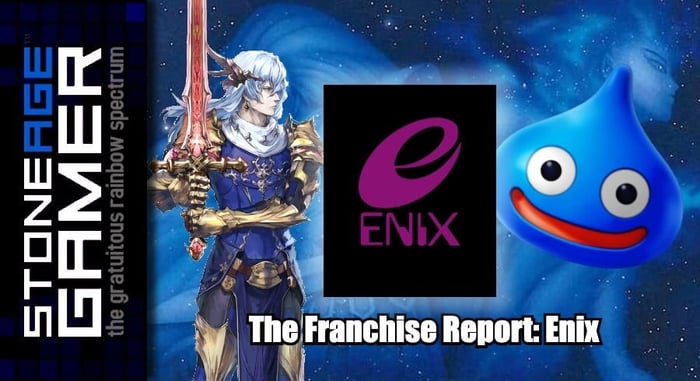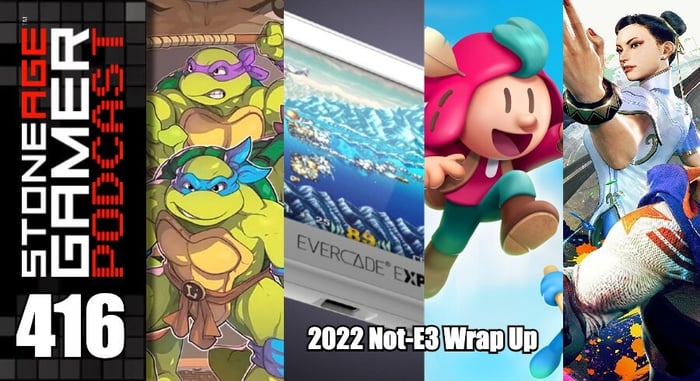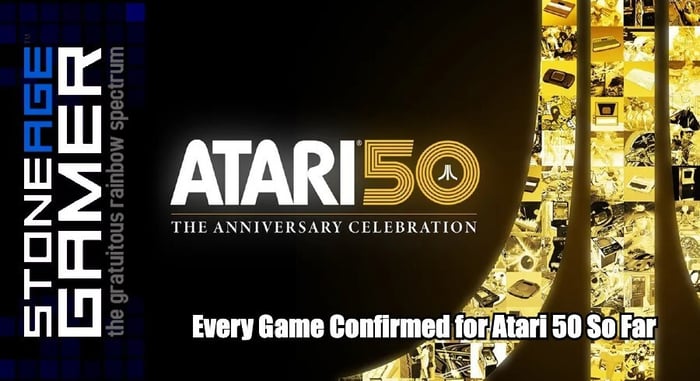
NES Sequels No One Played
The NES was home to a ton of classics, but what happened when some of those classics got sequels and nobody noticed? Overlooked gems, that's what! This time in The Gratuitous Rainbow Spectrum, let's take a look at some NES sequels that nobody played.
Transcript of the video:
One of the coolest things that’s ever happened in the world of video games is the evolution from 8 to 16-bit gaming. Watching our favorite games spring to new life with brighter colors, better graphics, and mind blowing sound was a real trip, but sometimes, instead of making the jump to the next generation, companies decided to throw a bone to the NES faithful. And unfortunately, sometimes those games got lost in the shuffle.
Early in the NES’s life there were a couple of racing games that everyone played at some point. One of those was Rare’s 1988 classic RC Pro-Am. This game appeared in calendars, promo posters, and more as one of Nintendo’s top-tier products, and with good reason. It was a great game! Graphics and gameplay were top notch, especially for its time, and it was a massively common game.
4 years later, the game actually got a sequel on NES called RC Pro Am II, and it was fantastic. Basically taking everything that made the first game great and bringing it to the next level, RC Pro Am II delivered on just about everything you could have wanted in a sequel. The problem was, it released in 1992, and most players were happily moving on to the next generation of consoles by that point. For those that did track this one down though, they found an awesome racer with elevation changes, killer graphics, and even 4 player support. It’s been one of the NES’s more expensive games for ages now, but fortunately for us all the game is fully playable in Rare Replay for Xbox One.
The other racer that fits in the category of “everyone played this thing” would have to be Squaresoft’s Rad Racer. This game has the unique distinction of being the last NES game to release in Nintendo’s “black box” format, it was included in the original Nintendo World Championships competition cart, and was immortalized in film history by being the game Lucas played with the Power Glove in The Wizard, quite poorly I might add.
Rad Racer was one of those inescapable games, and not in a bad way. For those who wanted to play Sega’s Outrun at home, Rad Racer made for a pretty convincing analog.
3 years after Rad Racer took the NES world by storm, Square released a direct sequel called Rad Racer II and as far as I can tell, almost nobody played it. It wasn't heavily advertised, it barely showed up in gaming magazines at the time, and I don’t remember any of my friends or rental shops getting the game. Probably because it really isn’t all that special. Where RC Pro Am 2 was remarkably ambitious, Rad Racer II felt like a lateral move at best with only one car to choose from, and not much variety overall. It’s still a fun game though, and if you were a fan of the original, definitely worth checking out since it’s not exactly an expensive cart to find.
Solomon’s Key may not be considered one of the all time classic NES games, but it probably deserves a little more notoriety than it gets. It’s a really fun puzzle platformer from Tecmo that fits right at home on the system. It’s pretty addictive, too.
It was a moderate success and got a Game Boy followup in the form of Solomon’s Club, but its proper sequel didn’t come to the US until 1993, which was well after the NES’s prime. It was also sort of a secret sequel here in the states too because while it was called Solomon’s Key 2 in other territories, we got a game called Fire n Ice and the box art made it look more like a Tetris style game than a followup to Solomon’s Key.
It’s sort of a shame too because this is a wonderful sequel. It takes a pretty radical turn in terms of what you’re doing in the game, but not so radical that it’s unrecognizable as a sequel. In fact, the spirit of the original still rings very true in that it’s still a puzzle platformer all about managing your surroundings. It’s got great animation, which was a somewhat common thing with late NES games, and contains hours of fun puzzles to solve. It’s another relatively expensive cartridge these days, but it’s currently available for free as part of Nintendo Switch Online, so good on Tecmo for that.
Also on Nintendo Switch Online is the excellent and incredibly weird StarTropics. This sort of Zelda-like adventure was originally created specifically for North American audiences, and contained some incredibly memorable moments like dipping a physical letter attached to the instruction manual in water to get a code to use a submarine. Also like Solomon’s Key, it got a sequel that sort of hid the fact that it was a sequel at all because of its title. Unlike Solomon’s Key, this wonderful game isn’t on Nintendo Switch Online.
Zoda’s Revenge is indeed a direct followup to StarTropics, and it doesn’t hide that fact anywhere except on the box art itself. This game is Zoda’s Revenge, with StarTropics 2 written really small underneath, which is a bit baffling because a lot of folks who played the original had no idea they ever made a followup! It’s a bit of a mixed bag overall because in trying to streamline the gameplay they gave protagonist Mike the ability to move diagonally which weirdly took away some of the game’s personality, but it’s still a very worthy successor to the original classic. It’s been re-released on Nintendo’s Virtual Console service a couple of times, but remains missing from NSO’s lineup. Hopefully it won’t be gone forever.
Contra for NES is one of the absolute all time classics on the system, and its sequel Super C was an excellent follow up. Better than its arcade counterpart even, Super C managed to take what worked about the first game and make it better looking, more exciting, and just an all around fun game to play alone or with a friend. There was actually a third Contra game on the NES though, and it had nothing to do with Contra III: The Alien Wars. It was Contra Force, and it was weird.
Contra Force barely plays like a Contra game at all, and it exhibits a striking lack of technical excellence for a Konami title. The game is bogged down by near constant slowdown. It was only released in the US too, with a Japanese version planned under a different title since the game had so little to actually do with Contra, but it was ultimately canceled. The game isn’t necessarily bad though, it’s just not much of a Contra game. And considering it was released in 1992, the same year as the excellent Alien Wars on SNES, it was kind of a hard sell. I personally only found out about the game when I worked at FuncoLand by seeing it listed in those little newspapers. This one’s never been re-released in any collections either, and remains one of the more expensive cartridges to find on the NES.
Speaking of legendary co-op experiences, who didn’t love Bubble Bobble on NES? This adorable action platformer pitted a pair of adorable dragon things against a ton of levels and a horde of weird bad guys through the cave of monsters to rescue your friends. It’s got some of the most memorable music on the system, and it’s still a blast to play today.
There was a middling follow up called Rainbow Islands: The Story of Bubble Bobble 2, but it played very little like its predecessor and never really found a niche on the NES. However, in 1993, again pretty late for an NES game, Taito released a rather charming actual followup called Bubble Bobble Part 2. It’s a great looking game that introduces colorful backgrounds and more well animated characters to the mix, as well as new power ups and boss battles, but it came at a pretty hefty cost. The simultaneous co-op has been replaced by having players take turns, which kind of defeats most of the point. Sill, Bubble Bobble Part 2 is an excellent game if you can get your hands on it. This game has never been re-released in any form as far as I know, and remains yet another one of the most expensive NES carts to track down.
Finally, we have licensed properties. During the 32-bit era, licensed games started to get a pretty bad reputation. Most were schlocky, poorly put together messes of games designed to sell on name recognition alone. Back in the NES days though, a lot of licensed games were really quite good. For example, Teenage Mutant Ninja Turtles 2: The Arcade Game, Tiny Toon Adventures, and DuckTales. These three games were some of the most prolific on the console in their heyday, and all three of them had direct sequels that came out just a bit too late for their own good.
Probably the most well known of the three was TMNT 3: The Manhattan Project, but even that wasn’t played by nearly enough people. It isn’t exactly a common game to find, and while everyone on Earth probably played TMNT 2 at some point, even with having landed a cover story on Nintendo Power, TMNT 3 sort of flew under the radar, probably because of its 1992 release date and the industry at large turning its attention to 16-bit consoles.
Konami also put out a sequel to Tiny Toon Adventures on the NES, though it was a bit of a weird one. Not quite Contra Force weird, but definitely too much of a departure from its prequel to do it any favors. Tiny Toon Adventures 2: Trouble in Wackyland features some truly excellent sprite work from the wizards at Konami, and a pretty solid soundtrack as well, but is overall much lighter on content, and plays more like a weird set of minigames than a proper action platformer. It was also a 1993 release, so it was definitely late into the NES’s life.
Finally we have Capcom’s Duck tales 2. The original DuckTales on NES is nothing short of legendary, so making a sequel was all but a given for Capcom. Why it took until 1993 to actually deliver one is a mystery though. It’s a solid game that would have sold like gangbusters had it released a year or two sooner, but unfortunately it was largely overlooked at the time of its release. It was included in the Disney Afternoon collection though, so at least it’s not hard to play if you want to give it a go. The original cart though? That's another spicy one.
Tracking down these oddball sequels can indeed be a bit of a pain, but thanks to the miracles of modern technology, these classics are never truly out of reach. So if you have the ability, and you’re a fan of the originals, track them down and give them a go. The NES library may be well-trodden territory, but there always seems to me something new to discover if you look hard enough.





